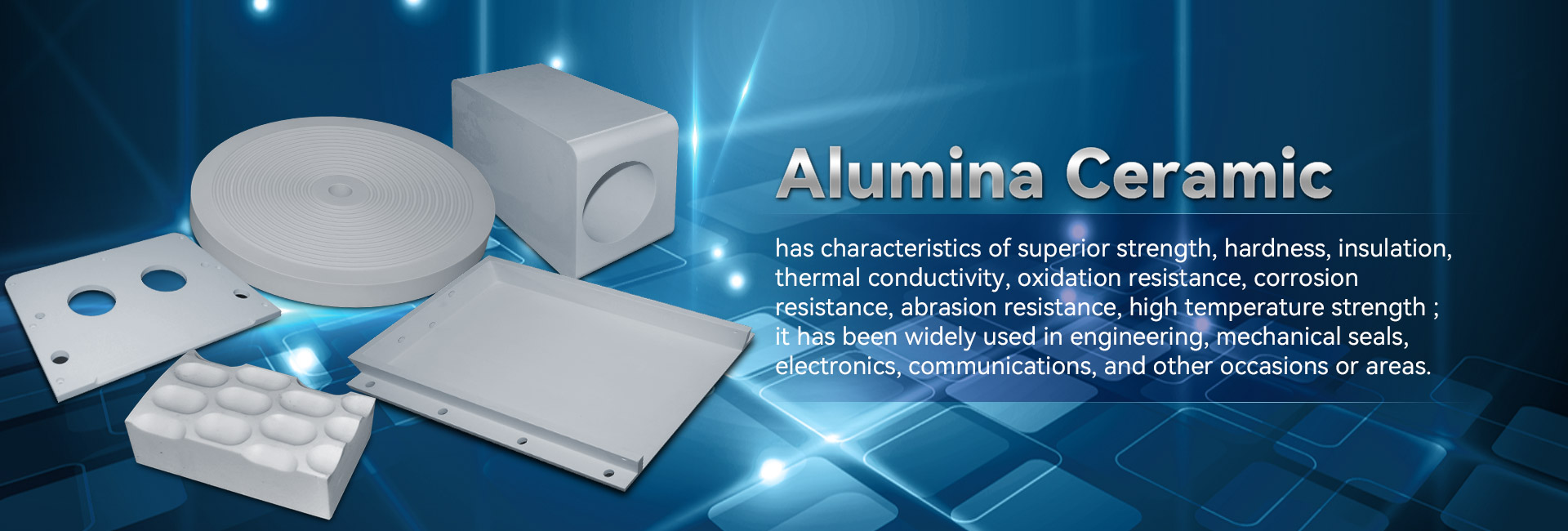
Industrial ceramic exhibit distinguished mechanical features, establishing them fit for a comprehensive collection of implementations. Developing from flight and automotive to technology, these products are persistently evolving to match the requirements of a leading-edge society. technic ceramic
- Their toughness and immunity to unforgiving environments make them paramount for state-of-the-art systems.
- Also, technical ceramics provide profits in terms of efficiency, aiding the improvement of cutting-edge processes.
Manufacturing Substances: Built for Premium Operation
Assembled ceramics outperform in stringent deployments due to their extra special characteristics. Produced from exclusive raw compounds and subjected to meticulous processing systems, these high-tech substances display remarkable fortitude, deterioration resistance, and endurance to drastic environmental conditions, chemical attack, and grinding. From aeronautics sections to cutting tools, industrial ceramics yield peerless quality across many areas. Their malleability allows withstanding rugged conditions, securing tenacity and steadfastness. As technology progresses, the need for advanced components grows, cementing the key part of industrial ceramics in shaping a robust outlook.
Leading-Edge Ceramics: Pushing Component Limits
Compositions, manifesting exceptional toughness and endurance, are engaged in a transformation. Cutting-edge ceramics, developed with careful control over their arrangement and fine structure, breaking the constraints of all that is attainable. These substances manifest a extensive assortment of features, designating them best suited for stringent domains such as orbital, health sciences, and sustainable power. From slender parts that resist extreme heat levels to bio-tolerant implants that bond tightly with the physical form, advanced ceramics are altering our existence.
Exact Ceramic Engineering: Achieving Rigid Demands
Ceramic fabrication has matured dramatically in recent times, empowering the assembly of elaborate and highly practical ceramic items. These units are necessary across a inclusive range of domains, including orbital, biological, and technological domains. Fulfilling the specialized standards for these uses calls for detailed fabrication practices that confirm dimensional correctness, surface polish, and material traits. Contemporary ceramic fabrication processes adopt numerous methods, including slip casting, injection molding, and additive manufacturing. These strategies enable the creation of sophisticated designs and meticulous elements with unmatched consistency. Moreover, advances in material research have yielded new ceramic recipes endowed with advanced aspects. These compounds display increased resilience, endurance, and tolerance to severe temperature conditions, facilitating their use in critical sectors.
The possibilities for strict ceramic fabrication are substantial. As explorations and innovation go forward, we can count on even more state-of-the-art tactics and materials that will again stretch the boundaries of what is manageable in this domain.
Durable Ceramic Products for Severe Environments
Specialized ceramic elements feature extraordinary robustness and tolerance against severe realms, making them recommended for demanding ploys in energy areas. These modern ceramics can survive intense environmental loads, oppose corrosion, and retain their capability under severe load-bearing loads. Their exceptional microstructural specifications equip reliable work in severe realms, including high-temperature furnaces, turbines, and nuclear systems.
- Ceramic composites
- High-temperature stability
- Reduced mass
Ceramic Blends: Blending Robustness and Efficiency
Blended materials furnish a attractive mix of mechanical durability and distinct functional capacities. Through the incorporation of ceramic fragments within a foundation, these materials achieve noteworthy functionality. This combination results in heightened immunity against high temperature stress, wearing, and chemical degradation, rendering them effective for exacting duties in space, vehicles, and utilities arenas. Furthermore, ceramic composites can be personalized to possess exclusive properties like electrical conductivity or biocompatibility, expanding their scope across diverse domains.
Atomic Oversight in Innovative Ceramics
Reaching targeted attributes in high-tech ceramics routinely calls for careful regulation over their granularity. Various treatment aspects, including sintering firing temperature, duration, and atmosphere, alongside the integration of dopants or ancillary phases, materially influence the layout of particles, pore space, and other microstructural characteristics. Meticulous optimization of these settings allows for the enhancement of toughness, splitting resistance, and temperature conductivity. For example, upsizing the sintering thermal exposure can stimulate grain development, thus increasing mass concentration and improving mechanical effectiveness. Conversely, regulating the firing atmosphere may transform the oxidation position of the ceramic, thereby influencing its electrical electric flow or magnetic aspects. Understanding these relationships between microstructure and properties is crucial for developing advanced ceramics with fine-tuned traits suitable for varied deployments.
Wear-Resistant Ceramics: Elevating Robustness
During hard-wearing production branches, where items are submitted to constant friction and breakdown, compounds with notable durability are urgently imperative. Wear-resistant ceramics have emerged as a principal solution, yielding unparalleled durability and functionality in varied realms such as production, mining, and aerospace. These state-of-the-art materials possess a singularity fine structure that strengthens their competence to endure scraping. By utilizing the essential hardness and mass of ceramic assemblies, engineers can formulate robust segments capable of withstanding the most severe operating settings.
Biocompatible Elements: Implementations in Medicine
Living tissue-compatible ceramics have remodeled the medical sector, delivering an array of useful benefits for broad works. These products are passive within the anatomy, minimizing reactionary responses and facilitating regeneration. A prime purpose for biocompatible ceramics is in prosthetic supports, where their durability sustains long-lasting stability to damaged tissues.
Equally important, they are deployed in oral surgery, providing a steady and harmonious solution for prosthetic teeth. Ceramics also assume a key place in drug administration, allowing the concentrated supply of drugs to specific places within the flesh.
- In addition, biocompatible ceramics are increasingly being investigated for tissue engineering, serving as a matrix for restoration.
- Therefore, the road ahead of biocompatible ceramics in healthcare looks optimistic, with continual efforts expanding their potential.
Intelligent Ceramic Sensors: Driving Consistent Calculations
Sensitive ceramic devices have materialized as important constitutents across a wide array of industries. These sensors exploit the special features of ceramic elements to deliver highly reliable quantifications. Their strength in {demanding|harsh| 